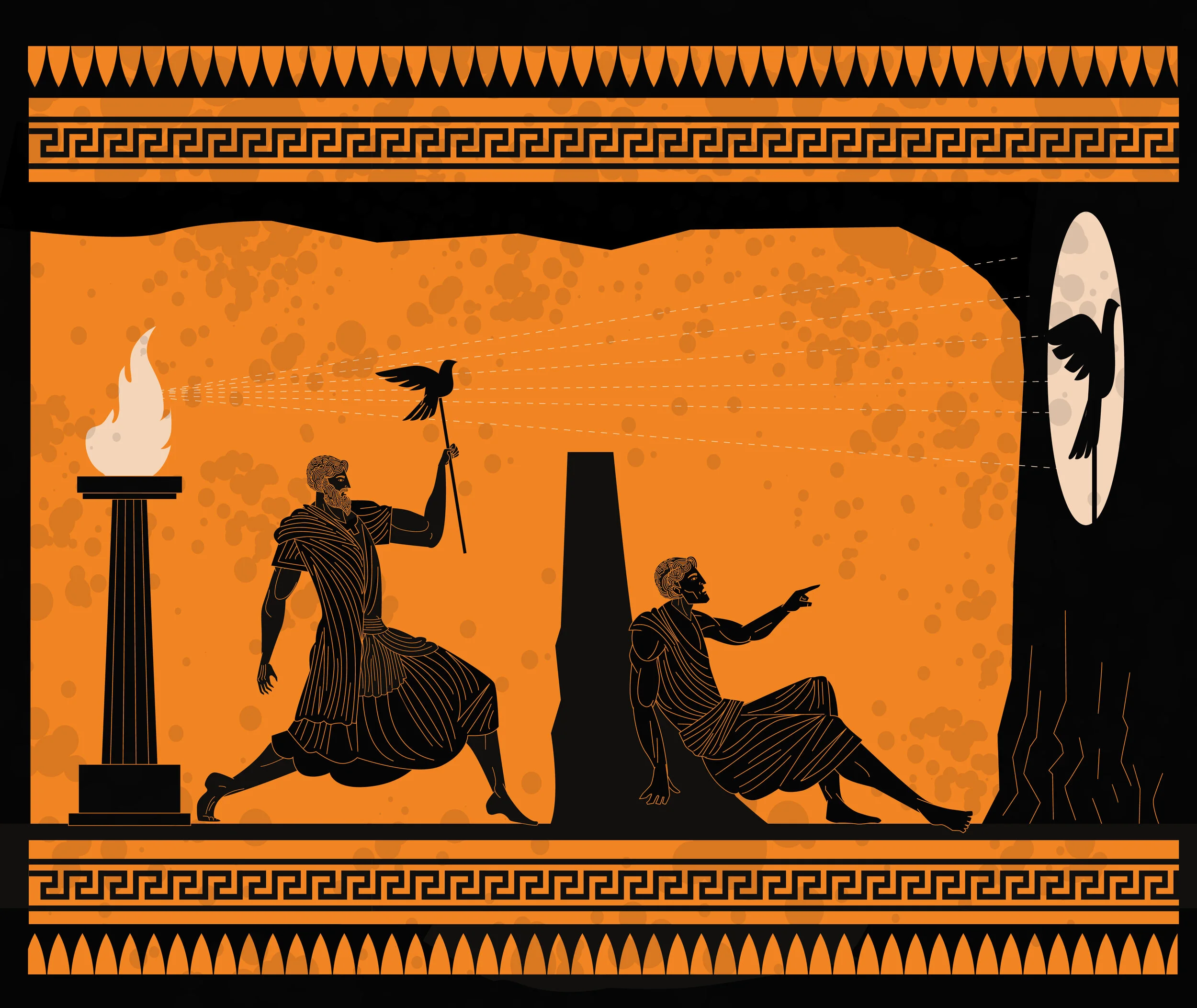‘Other than’ photography
This almost took me my surprise but starting this Photography Master’s programme made me realise just how much I have missed my other passions for philosophy and writing - also art, film and music - and how all of these can come together in my creative endeavours. I’ve not felt this excited by creative prospects in a long time.
So - this post is all about connections and links with other disciplines, what I love and how essential themes that seem to haunt me across creative disciplines intersect with my photography vision.
These philosophical themes revolve around perception especially in relation to acquiring knowledge (Platonic idealism and empiricist vs rationalist narratives) and existentialist questions especially around personal identify and the self.
Plato’s Cave Allegory in the “Republic’
In literature, I am fascinated with fiction books that explore profound existential themes and are written in very narrow point of view, slowly revealing the story and characters to deliver usually a very climactic twist or reveal that puts everything into perspective, a superb example of which is Kazuo Ishiguro’s ‘Never Let Me Go’. Ishiguro, a British author of Japanese origin was awarded the Nobel Prize for Literature in 2017 - ‘through novels of great emotional force, (he) has uncovered the abyss beneath our illusory sense of connection with the world’.
In the same way as, once you get to the end of the book, you want to read it all over again with your newly acquired knowledge, I’d love to explore the same slowly unveiling mystery in photographs, exploring elements of the image to discover new stories or going beyond the visible - there’s more than meets the eye.
Kazuo Ishiguro - Never Let Me Go book cover
One of the best films I’ve ever seen (and it’s really hard to choose because I love so many) is Kai Wai Wong’s masterpiece ‘In the Mood for Love’ - not only cinematographic perfection but a fragile and deeply emotive exploration of relationships, enhanced by Shigeru Umebayashi’s goosebump-inducing music. The way the story is told and the main characters are portrayed is again very much through a seemingly narrow and simple plot and narrow points of view (for example the faces of two main characters - the cheating spouses - are never seen, but their presence and impact is always felt).
To convey such strong emotions with such great sensibility and seemingly minimalist storytelling tools is an art that is rarely seen these days when assaults on senses seem to take priority over subtly but strongly connecting through emotions.
The point of view, minimalist but profound storytelling and imagery that makes you freeze with every frame are point of inspiration for me.
Trailer for In the Mood for Love
Still in film world, I am a big fan of M. Night Shyamalan’s films, notably The Sixth Sense and the Unbreakable series - Unbreakable, Split and Glass. The same themes and narrative styles around personal identity, perception and reality and a cleverly and slowly revealing plot full of profoundly challenging twists make these top of my list.
In the world of arts, I draw parallels to the somewhat playful renditions of ‘trompe l’oeil’ or optical illusion that artists explore, most notably the work of surrealist painters such as Dali. A great example is his work exhibited at the Dali Theatre-Museum in Figueres (it really has to be seen in person to be appreciated but see the link below). There is always more to the image than meets the eye, and this is an area that I am interested in exploring in my photography.


